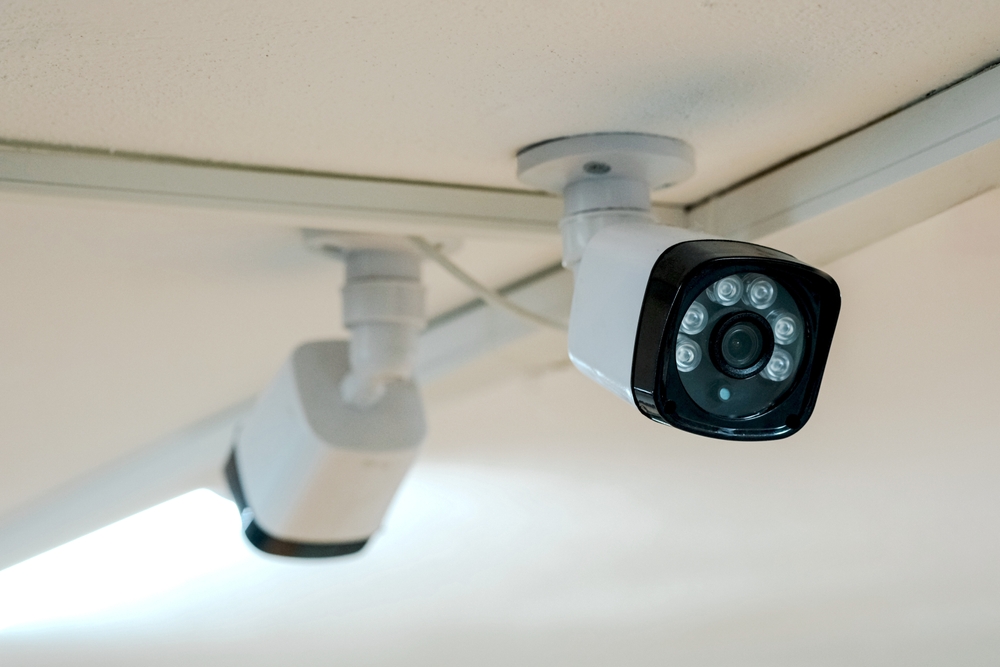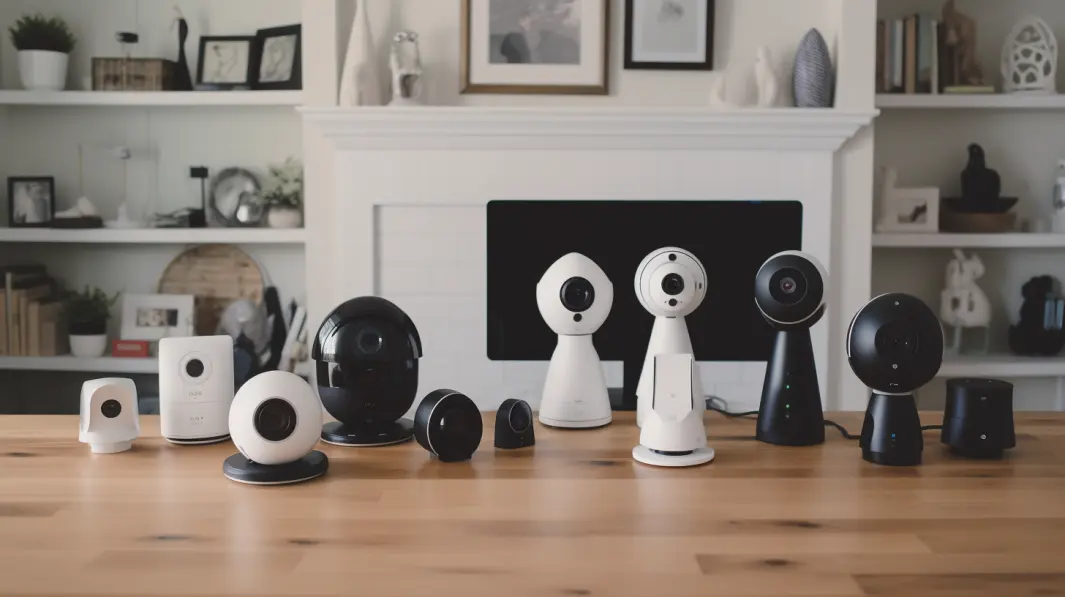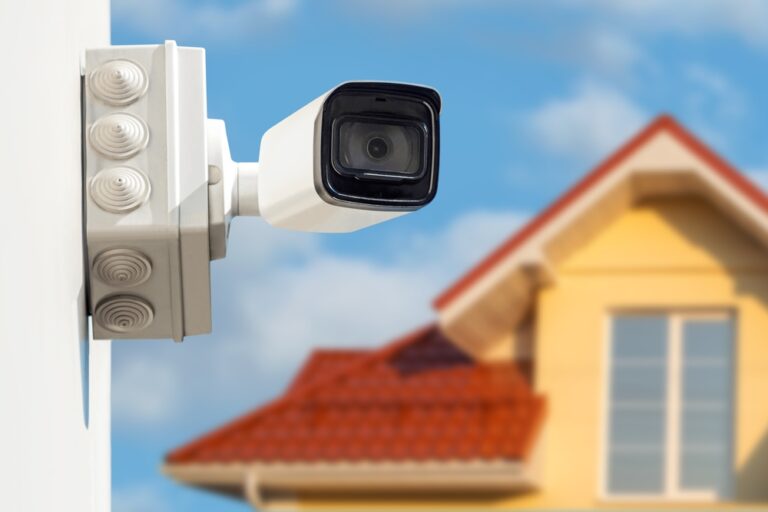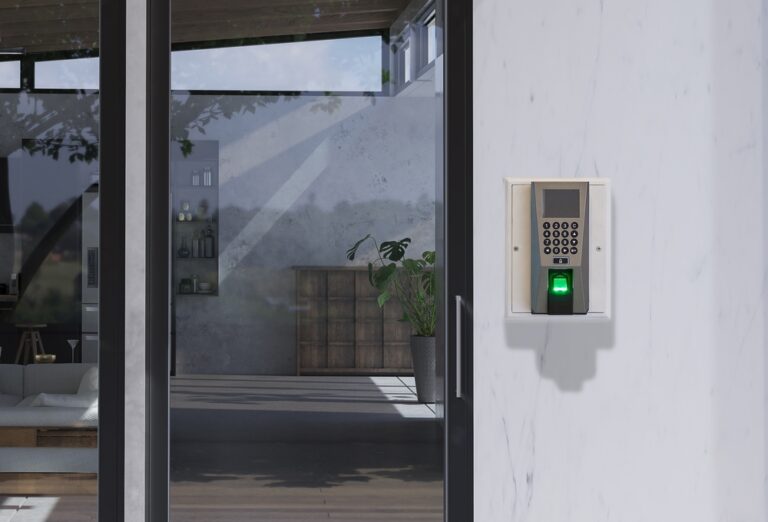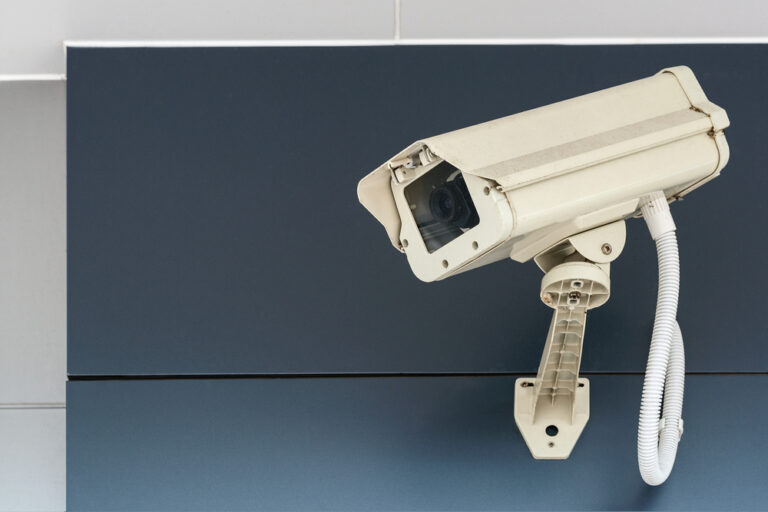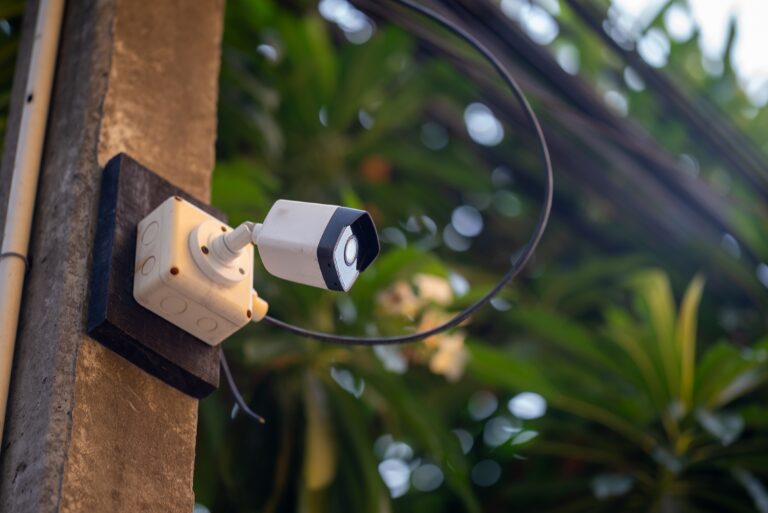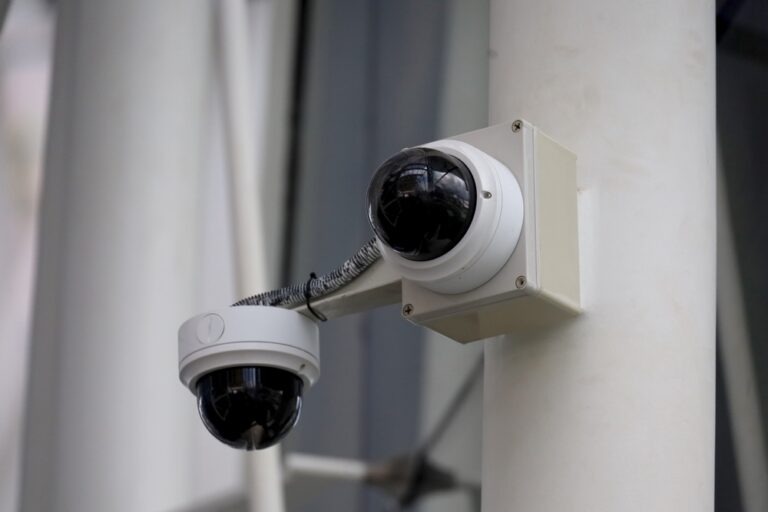- 1) Introduction
- 2) Understanding IP Intercom Systems
- 3) Benefits of an IP Intercom System with Camera
- 4) Factors to Consider When Choosing an IP Intercom System
- 5) Use Cases for IP Intercom Systems
- 6) Enhancing Security with IP Intercom Systems
- 7) Innovative Features of IP Intercom Systems
- 8) Planning for an IP Intercom System
- 9) Setting Up an IP Intercom System
- 10) Conclusion
-
11)
FAQs
- 11.1) How do IP intercom systems improve security?
- 11.2) What additional features enable IP intercom systems?
- 11.3) How do IP intercom systems differ from analog intercoms?
- 11.4) What infrastructure is required for IP intercom systems?
- 11.5) Why engage a security systems integrator for IP intercom deployments?
Introduction
Installing a security intercom system with an IP camera can greatly improve safety and convenience for both commercial and residential properties. An intercom entry system allows you to visually verify and speak to visitors before remotely unlocking a door or gate for access. IP intercom systems take this functionality even further by transmitting video, audio, and control commands over an Internet protocol (IP) network.
| Key Takeaways |
|---|
| IP intercom systems enhance security via visual verification of visitors, access control integrations, and video deterrence |
| Network connectivity in IP intercoms supports remote administration, mobile management, and scalable deployments |
| Advanced cameras, electronic locks, smart access cards unlock premium capabilities improving user experiences |
| Flexible support across diverse commercial office buildings, residential properties, schools, industrial sites |
| Consultations with integration experts like Jefferson Security Cameras tailor IP intercom systems to needs while navigating infrastructure constraints |
IP intercom systems provide significant benefits over traditional analog intercom systems. Their networked design makes them scalable, allows for modular components, and enables remote access and management. By integrating high-definition cameras, mobile connectivity, and electronic access control, they also offer innovative security features and enhanced capabilities.
This article will explore everything you need to know about IP intercom systems with cameras. We’ll look at how they work, key benefits, use cases across industries, advanced features for maximizing building security, and best practices for choosing the right system and service provider for your needs. Follow along for an in-depth guide on realizing the full potential of an IP intercom and door entry solution.
Understanding IP Intercom Systems
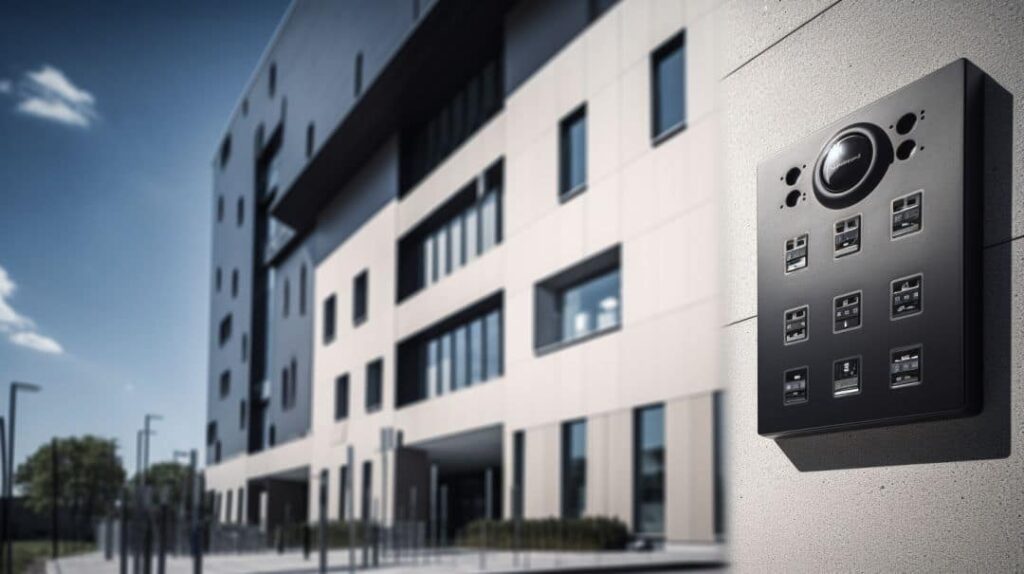
Before highlighting the many advantages of an IP intercom system, it helps to understand what exactly this technology entails. We’ll break it down by answering three central questions:
What is an IP intercom with camera?
An IP video intercom combines:
- Intercom system – Enables two-way voice communication, access control, and remote entry capabilities via audio and video stations placed at facility access points
- IP camera – High-resolution video camera that connects to a network via Ethernet or WiFi
- Access control interface – Keypad, proximity reader, or other interface for authenticating and granting access permissions
- IP networking – Leverages Internet protocol to transmit video, audio, data, and access control commands between intercom components
By converging an advanced IP surveillance camera with a feature-rich IP intercom, you get a versatile access control and security solution suitable across many applications.
Components of an IP intercom with a camera
While IP intercom systems come in different shapes and sizes, most share these core components:
- Door stations – Wall-mounted intercom with an integrated video camera, microphone, speaker, and access control reader installed at facility access points
- Indoor video monitor stations – A video intercom monitor inside the building enables personnel to see/communicate with visitors and grant door access
- IP controller – Manages system settings, access permissions, routing of video and audio
An IP intercom also integrates seamlessly with other security infrastructure, including:
- IP video management system (VMS) – Centralizes video feeds and recordings from intercom cameras and surveillance cameras
- Electronic access control system – Leverages credentials (cards, codes, biometrics) and access permissions that integrate with the IP intercom system
- Network video recorders (NVRs) – Provides long-term retention of intercom video footage
With their modular nature and network-connected design, IP intercom systems can involve many moving parts working together behind the scenes to enable functionality.
How does an IP intercom with camera work?
When a visitor arrives and engages the IP video intercom system by ringing a doorbell or otherwise initiating contact, here is the high-level process:
- The door station’s camera begins streaming live HD video to the interior IP intercom monitors and optionally to a central VMS or NVR
- An audible chime or visual notification alerts personnel inside the building
- Personnel can view the door station camera feed on the video intercom monitor to visually identify the visitor
- A two-way voice call is established between the visitor at the door station and personnel via the interior station’s handset or hands-free speaker mode
- Once the visitor’s identity/intent is verified, access permissions are checked against the access control system
- If permitted, personnel can remotely unlock the door via the monitor station controls to grant the visitor entry into the facility
The entire event is recorded, with video footage retrievable anytime for future reference or analysis. Having the extended functionality of live remote video, clear audio two-way communication, and secure access control commands all networked together is what makes an IP intercom system so powerful.
Benefits of an IP Intercom System with Camera
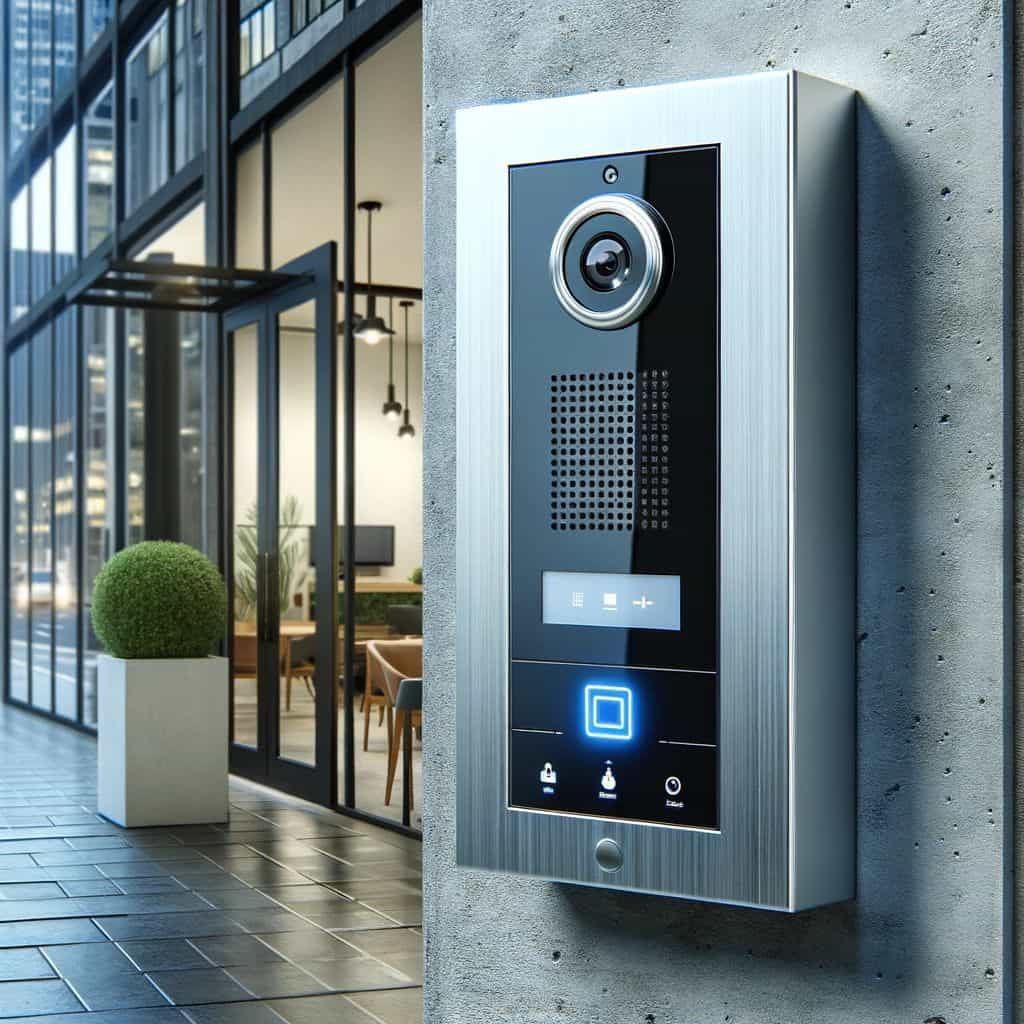
Integrating a high-resolution IP surveillance camera into an advanced digital intercom system provides some profound benefits compared to traditional analog intercoms or standalone access control solutions:
Enhanced Security
IP intercoms with integrated cameras vastly improve site security:
- Visual verification – Door station cameras let personnel visually identify visitors before allowing facility access, eliminating reliance solely on audio comms
- Video evidence – Intercom camera recordings provide indisputable documentation of security events
- Covert monitoring – Cameras allow low-key observation without visitor awareness
- Enhanced monitoring – Integrates intercom camera feeds with those from other security cameras for centralized monitoring
- Unified platform – Converges visitor management, access control, live surveillance, video recording, and analytics in one system
By incorporating IP cameras into the intercom system, you gain multiple layers of protection through comprehensive video-enabled verification and surveillance at access points vulnerable to intrusions.
Added Convenience
IP intercom systems also increase convenience and flexibility:
- Remotely screen visitors – Authorized users can view intercom cameras and communicate with visitors securely from anywhere via web or mobile apps
- Keyless entry – Doors can unlock automatically or remotely via electronic access control integrated with the intercom
- Flexible access permissions – Customized credentials allow tiered access levels across personnel
- Intuitive operation – Clever UX design across hardware monitors, software clients allows efficient usage
Personnel can easily manage visitors, authorize entry, modify system settings, and access footage all on-demand. IP platforms enable this simplified yet powerful experience.
Improved Features
Finally, IP intercom systems unlock advanced capabilities:
- Scalability – IP systems readily expand by licensing additional doors and interior stations
- Wireless integration – WiFi support allows flexibility in deployment locations
- Smart camera innovations – AI analytics like facial recognition, object detection available
- Upgraded components – Modern IP system leverages latest camera resolutions, two-way audio fidelity, materials
Leveraging an IP framework unlocks the latest innovations to enhance core door and video intercom capabilities in an easily upgradable platform.
The critical takeaway is that by combining best-in-class IP video and access control technology into one solution, IP intercom systems deliver profound security and convenience benefits for a diverse range of applications.
Factors to Consider When Choosing an IP Intercom System

Investing in an IP intercom system is a major decision. As you evaluate options, focus on these key considerations:
Cost
As advanced systems leveraging the latest IP technology, video intercom systems demand higher upfront costs compared to analog intercoms. However, given their far superior features and scalability, they deliver excellent return on investment. Cost factors include:
- Equipment – Door stations, interior touchscreens, necessary networking devices
- Installation – Expertise required depends on wired/wireless connectivity, facility setup
- Software licenses – Entry-level systems allow only 1-2 doors; access control/VMS require licensing
- IT infrastructure readiness – Existing network capacity and security impact expenditures
Seek customized quotes from leading vendors to maximize value. Consider financing options as well. With flexible pricing models available for security systems, an advanced IP intercom system can readily fit most budgets.
Integration with Existing Systems
For facilities with legacy analog intercoms or standalone access control already in place, assessing compatibility with the new system is key.
- Does the solution support incremental upgrades or require full replacement?
- Can existing door access credentials and permissions carry over or will new ones be required?
- What options exist for consolidating disparate systems onto one video-centric platform?
Ideally, the new IP intercom system will smoothly integrate with existing infrastructure to optimize previous investments.
Infrastructure Requirements
IP intercom systems operate over standard IP wired/wireless network connectivity. Consider bandwidth, PoE, router/switch ports, security protocols, and physical cabling needs.
Consult with Jefferson Security Camera’s experienced system designers to survey your current infrastructure and model out enhancements required. Carefully evaluate options for either working within existing infrastructure constraints vs budgeting for necessary upgrades to unleash the full potential.
Use Cases for Intercom Door Entry Systems
Finally, match prospective IP intercom solutions against planned functional requirements.
- Will it adequately serve your property’s visitors, occupants, staff that need access credentials?
- Does it cover the desired door stations and interior monitors?
- Will access control or camera integrations support key operational needs?
- Is the hardware versatile enough to support potential future use case expansions?
The ideal system aligns affordably with both immediate and longer-term visitor, video and access control requirements.
Clarify exactly how you intend leverage the intercom and door entry functionality with stakeholders upfront to inform system sizing and features.
Carefully weighing each of these factors will ensure you select and deploy the optimal IP intercom system meeting budget, integration, infrastructure, and functional requirements for lasting value.
Use Cases for IP Intercom Systems

A key benefit of IP intercom systems is their immense flexibility supporting diverse environments. Let’s explore some of the most popular use cases.
Commercial Office Buildings
For corporate offices, IP intercoms deliver:
- Secure verified entry for employees, visitors
- Integrations with access cards, directories, schedules
- Customized desk monitor stations for executives
- Coverage across multiple perimeter doors
- Backup to reception for managing visitors
Office towers rely extensively on video intercoms to allow convenient yet secure lobby access.
Residential Buildings
Within apartment, condos, gated communities, capabilities like:
- Screening visitors before buzzing them into buildings
- Keyless smartphone entry for residents
- Video records of all access events
- Secure pool gates, common doors
- Installing intercom monitors within each unit
Proven vital for multi-unit dwellings to control access.
Schools
For educational campuses, crucial functionalities include:
- Funneling visitors to main office for checks
- Lockdown protocol activation via intercom system
- Entry legitimacy verified via camera before door unlocks
- Indoor monitors placed in administrative offices
- Outdoor coverage of parking lot gates
Critical last line of defense for student safety.
Industrial Sites
And across corporate campuses and facilities:
- Monitoring key ingress points into factory floors, warehouses
- Enabling plant managers to visually verify drivers, workers
- Rough environments still covered with vandal-proof stations
- Hands-free audio critical for workers wearing protective gear
- Ties into personnel databases, badges
Essential for carefully governing access to sensitive industrial properties.
This overview highlights how advanced IP intercom systems uniquely address the visitor, access control, and security challenges common across markets. Applied well, they become an invaluable force multiplier improving safety and operations.
Enhancing Security with IP Intercom Systems
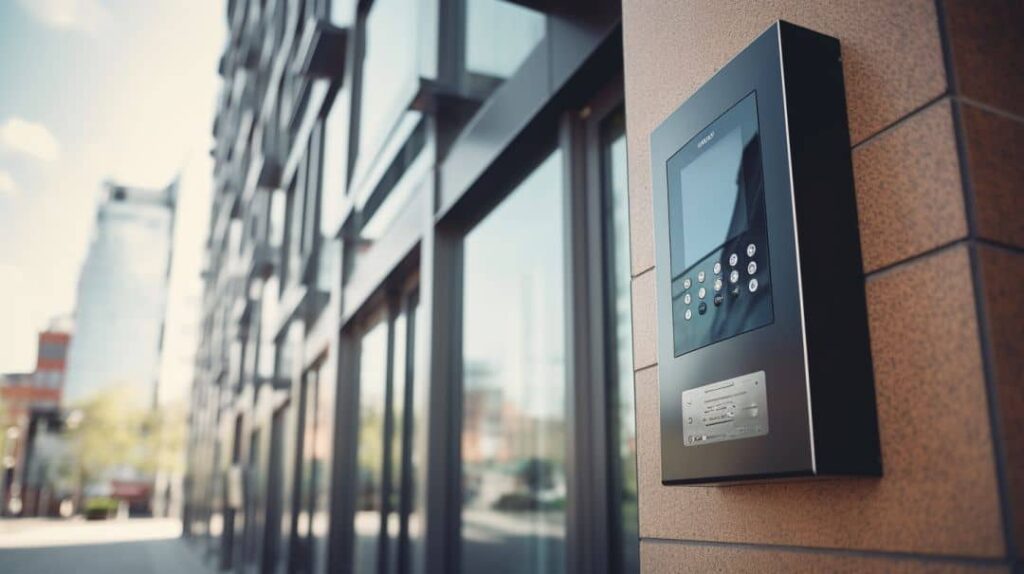
A primary motivation for deploying an IP intercom system is to strengthen defense against unauthorized access or intrusions. These core capabilities bolster protection:
Tightening Access Control
IP intercom systems integrate directly with access control platforms to enable robust entry management:
- Restricted permissions – Granular credentials enforce access limitations, permissions for each user
- Scheduled access – Automated rules configure when credentials are operational to restrict off-hours entry
- Audit logs – System generates detailed events showing successful and failed access attempts
- Temporary credentials – Special badges can grant one-time or temporary access for visitors, contractors
- Integration – Ties into corporate directory services and HR systems to instantly update access when employees are on-boarded/off-boarded
This enables precise, systematized control over every entry while still maintaining convenience for authorized personnel.
Integrating with Video Surveillance Systems
Further value arises from incorporating intercom camera recordings into broader surveillance efforts:
- Centralized monitoring – Door station feeds display alongside other security cameras for unified visibility
- Visual verifications – Cross-reference access control events against corresponding video for multi-factor confirmation
- Enhanced forensics – Quickly pivot between access logs, video timeline after incidents to reconstruct sequences
- Covert monitoring – Camera integration enables discrete observation of visitors unaware of monitoring
Integrating the IP intercom system with core video infrastructure compounds protective measures.
Benefits for Both Residential and Commercial Properties
Unlike traditional home intercoms focused solely on enabling door entry conversations, advanced IP intercom systems allow building managers, homeowners, and corporate security teams alike to:
- Establish standardized protocols governing visitor entry procedures
- Remotely screen and authenticate guests seeking access to properties
- Deter bad actors wary of twin barriers posed by video surveillance and access control
- Unify monitoring of lobbies, common areas, hallways, gates and parking areas
- Eliminate unauthorized piggybacking entry so prevalent without controlled access
- Maintain high visibility even during emergencies or power failures
Robust IP intercom solutions satisfy scalable corporate implementations while also packing helpful features catering to residents. The converged platforms address requirements common across verticals for streamlining secure visitor management.
Innovative Features of IP Intercom Systems
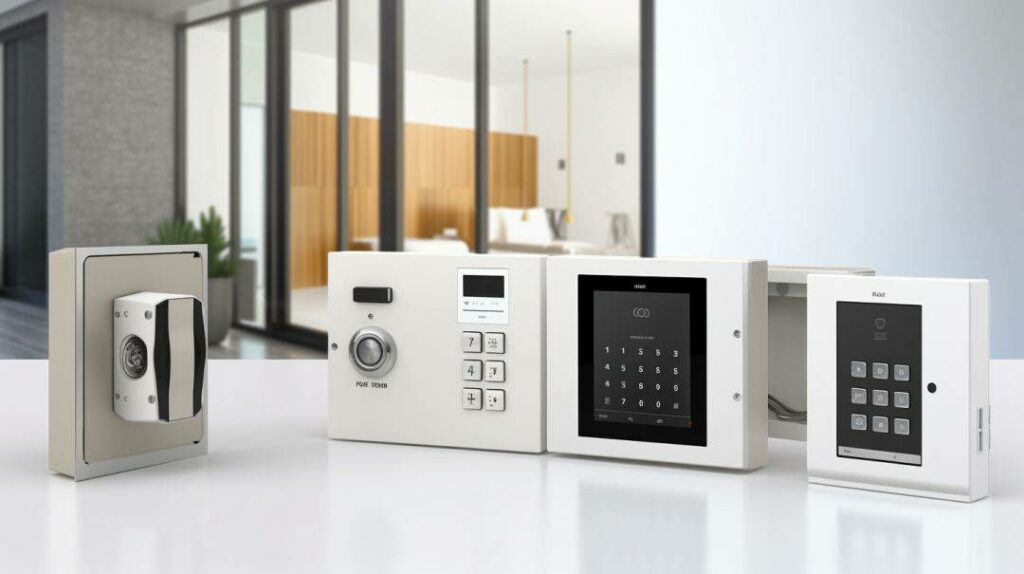
Beyond core functionality, the latest IP intercom systems really differentiate themselves with premium capabilities:
Higher Resolutions and Wider Field of View
Modern IP cameras at the door station support:
- 4K video – Sharper imagery critical for facial recognition, license plate capture, evidence
- 180-degree field of view – Eliminates blind spots for complete visibility of visitors and surrounding areas
- Low light optimization – Continue monitoring even in dark conditions
- Smart codec compression – Reduces bandwidth/storage needs for high-quality feeds
Capture every event in fine detail under any lighting for analysis, investigations and situational awareness.
Remote Management Capabilities
Since IP intercom systems connect over networks, cloud platforms enable:
- Mobile access – Secure apps on smartphones/tablets allow managers to view doors, cameras, speak to visitors remotely
- Status visibility – Web dashboards with real-time diagnostics help desk monitor uptime, pinpoint issues early
- Over-the-air updates – Perform system upgrades across all hardware without onsite visits
- Backwards compatibility – Phased, non-disruptive installations support transition from old analog to IP
Authorized users enjoy complete centralized control and visibility from anywhere.
Electronic Door Locks
For even more security, integrated electric strikes and electromagnetic locks:
- Keep doors locked at all times, only opening momentarily for authorized individuals
- Allow remote lockdown initiation during emergencies
- Enable fail-secure mechanisms to remain locked without power
- Provide conveniently keyless experiences for frequent users like employees
Take access management to the next level with intelligent interlocks directly bound to the IP intercom system.
This sampling of premium features demonstrates how the flexible IP architecture supports innovations around core capabilities to meet demanding user expectations.
Planning for an IP Intercom System
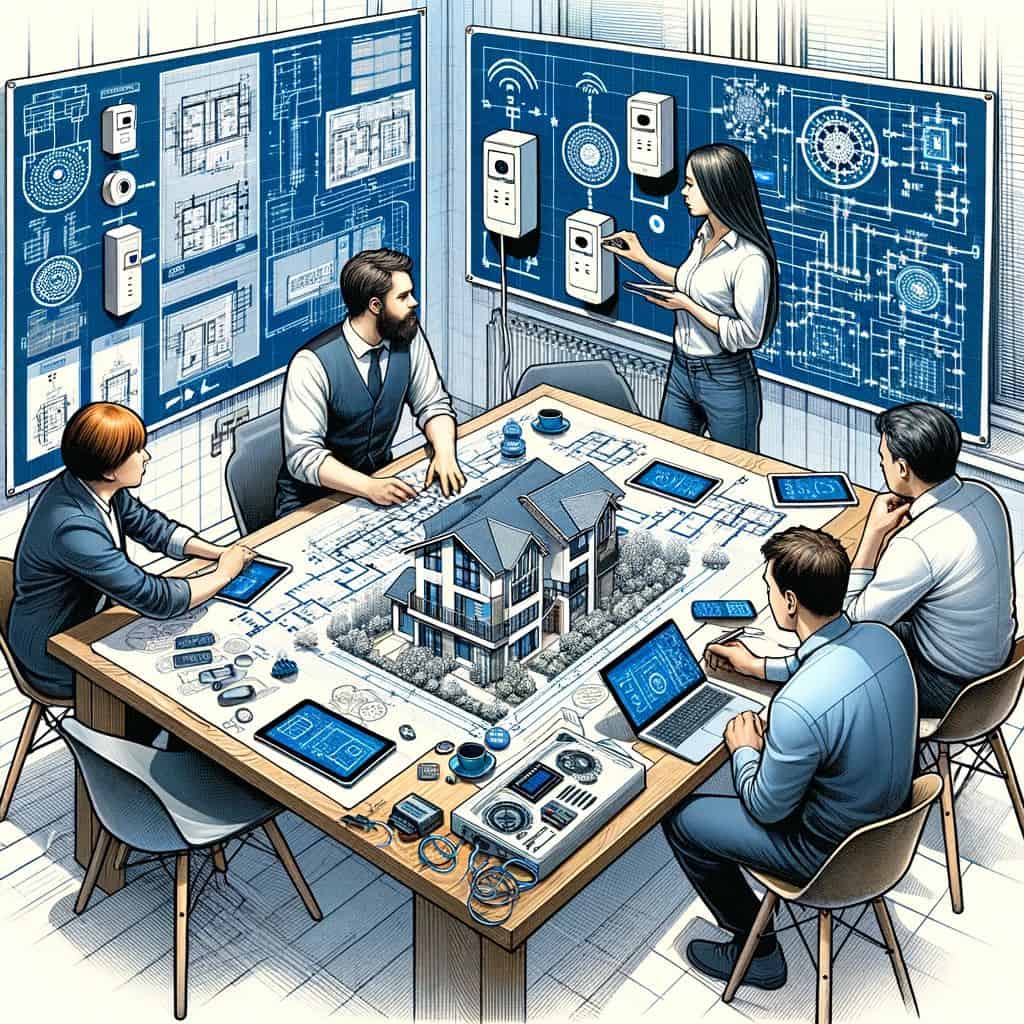
Meticulous planning is key to realize the maximum ROI from an IP intercom system investment. Core aspects of the planning process include:
Identifying Your Property’s Needs
Start by thoroughly evaluating:
- Entry/exit points needing access control like lobbies, gates, garages
- Typical building visitor volumes across hours, days, seasons
- Current pain points around visitor management and bottlenecks
- Video surveillance blind spots needing monitoring
- Vulnerabilities posing highest risk requiring tightened security
Constructing this needs analysis becomes the foundation for strategic system deployments addressing top priorities.
Choosing the Right Intercom System
Next, work with reputable vendors like Jefferson Security Cameras to map functional components against assessed requirements:
- Camera coverage and video quality demands
- Number of interior stations needed by personnel
- Door stations warranted across external entry points
- Access control integration complexities
- Infrastructural readiness assessing networks, cabling, power availability
- Analytics, storage considerations
Sizing correctly avoids gaps while right-featuring prevents overspending.
Consulting with Experts
Given complexities around features, integrations, infrastructure readiness and cost, soliciting expert guidance is key.
Seasoned providers specializing in IP intercom systems offer:
- Technology perspectives comparing solutions
- Installation best practices fine-tuned over years
- Advice optimizing investments in adjacent security infrastructure
- Deployment options balancing cost, on-premise vs cloud hosting, in-house IT vs fully managed support models
- Assistance modeling out staged, multi-year modernization roadmaps
Leverage specialists as an invaluable free resource when evaluating systems most appropriate for your environment.
Carefully progressing through requirements gathering, solution mapping, and expert consultations positions you to make the smartest IP intercom investments paying dividends for years.
Setting Up an IP Intercom System

Once stakeholders sign off on the IP intercom solution, shift focus to the critical setup phase. Major aspects include:
Installation Process
Physical installation demands considerable care and precision:
- Structured cabling must cleanly route from door stations to central IT comms rooms
- Power over Ethernet (PoE) standards assure reliable connectivity
- Aesthetically mounting exterior door stations often necessitates masonry work
- Network configuration assigns valid credentials so components seamlessly discover each other
- Careful testing across every speaker, camera, and access control module guards against defects
Submit finalized equipment diagrams/schematics upfront and defer to certified technicians for trouble-free deployments.
Troubleshooting Common Issues
Post-installation, technicians methodically:
- Validate flawless video, audio, access control across every local/remote monitoring location
- Perform staged failover/fallback tests by severing network connectivity to validate redundancies
- Load test across peak estimated traffic volumes without performance degradation
- Utilize monitoring dashboards and system logs to pinpoint bottlenecks
- Apply latest firmware updates and optimizations
Thorough diagnostics and preventative measures ensure smooth day-to-day operations.
Training for Personnel
Finally, provide structured training workshops enabling all staff roles to expertly operate the system:
- Door station operation – Correct interaction protocols to facilitate visitor entry
- Video monitoring – Streamlined access to live/recorded door station feeds
- Access control – Permission modification, credential management, audit reviews
- First responders – Protocol response when anomalies occur like failed access attempts
- Administrators – System health optimization, firmware updates, report generation
Proper adoption across stakeholders maximizes capabilities and ROI realization.
Allocate adequate resources for knowledgeable technicians to cover planning, execution, diagnostics, and training when installing IP intercom systems to head off issues… Once configured optimally, the workflows become second nature solidifying protection.
Conclusion
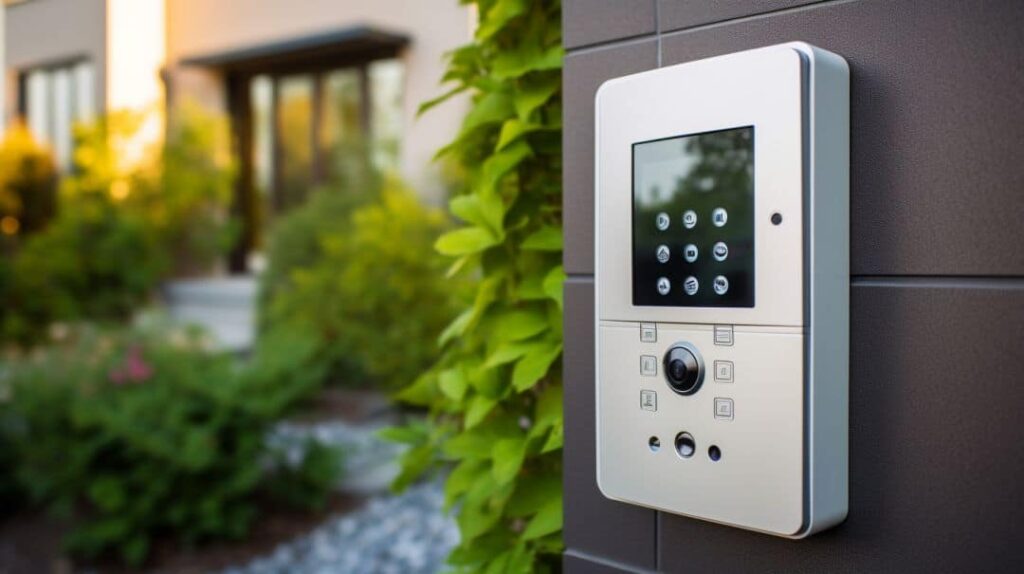
IP intercom systems with integrated security cameras transform facility access control by converging advanced video surveillance, communications, and visitor management onto intelligent, networked platforms.
Key takeaways around capabilities and benefits of video IP intercom systems include:
- Enhanced protection – Visual verification, access policies, integrations, deterrence safeguard against intrusions
- Future-proof foundations – Software expansions, door scalability, mobile apps build on core IP investments
- Innovative features – High-resolution feeds, electronic locks, remote administration deliver premium user experiences
- Cross-industry relevance – Flexible support for diverse verticals including corporate offices, residential buildings, schools, factories
- Expert guidance – Certified solution architects tailor systems to needs and infrastructure through advisory consultations
Carefully planned IP intercom system deployments check all boxes solving convenience, operations, and security challenges around managing visitors and facility access.
Jefferson Security Cameras as experienced providers recommend always progressing incrementally when upgrading legacy systems. Prioritize the highest traffic doors first, then progressively add supplementary doors once stakeholders validate capabilities. Eventually facility access fully modernizes onto a converged platform boasting crisp IP video surveillance, instant communications, and air-tight access policies.
Successfully realizing this vision hinges on proper planning around assessed needs, solution mapping, infrastructure readiness, and implementation specifics. Heed the best practices covered in this article when embarking on an IP intercom upgrade path. Over time, the benefits compound allowing staff to securely manage visitors, vendors, personnel with minimum disruption to core operations.
Contact Jefferson Security Cameras today at (267) 662-1423 to initiate a free consultation or assessment around integrating advanced IP intercom systems across your properties. Their team of advisors stands ready to evaluate your environment and roadmap out cost-effective migration plans matching unique requirements.
FAQs
How do IP intercom systems improve security?
IP intercom systems enhance security by enabling visual verification of visitors using integrated door station cameras, integrating with access control platforms for tight permission control, and video surveillance for monitoring and evidence. The combination of seeing visitors, speaking to them, and governing facility access provides a formidable layer of protection against unwanted intrusions.
What additional features enable IP intercom systems?
Advanced IP intercoms unlock innovative capabilities including high-resolution 4K cameras, wider viewing angles, remote administration via web and mobile apps, electronic door locks, and seamless integrations with corporate directories for instant access provisioning when employees join or leave the company.
How do IP intercom systems differ from analog intercoms?
IP intercom systems transmit video, audio and data over Internet protocol wired and wireless networks. This enables them to incorporate high-resolution cameras at each door for security, scale cost-effectively by adding doors/monitoring stations via licensing, integrate new innovations thanks to modular components, and provide convenient remote access via web and mobile apps. Legacy analog intercoms rely on direct wiring between fixed door stations and interior units using proprietary signaling to simply enable audio communications.
What infrastructure is required for IP intercom systems?
An IP intercom solution requires standard IP network connectivity over Ethernet or WiFi between doors and a central IT room housing servers/recorders. Wired door stations use Power over Ethernet (PoE), while wireless options rely on batteries or external power. Additional components like switches, routers, servers may be warranted depending on scale. A reputable vendor can assess existing infrastructure readiness and requirements as part of planning deployments.
Why engage a security systems integrator for IP intercom deployments?
Reputable integrators offer invaluable expertise advising around solution selection, infrastructure readiness assessments, installation best practices, diagnostics, testing, and training. They become trusted advisors maximizing system value in environments constrained by prior investments, legacy gear, budget limitations or IT resourcing. Depending on internal capabilities, outsourced support can encompass partial or full solution ownership.



